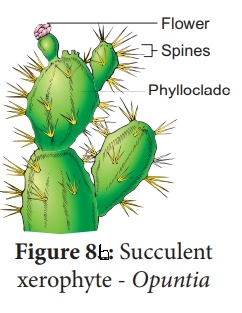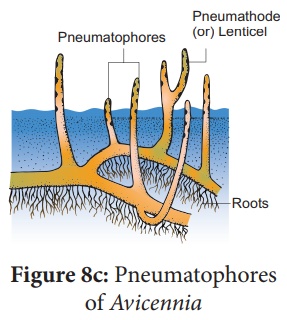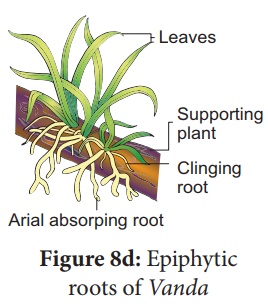Fresh or Preserved Specimens - Botany Practicals - Ecological adaptations of plants found in hydro-phytic, xerophytic, halophytic and epiphytic conditions | 12th Botany : Practicals
Chapter: 12th Botany : Practicals
Ecological adaptations of plants found in hydro-phytic, xerophytic, halophytic and epiphytic conditions
Fresh or preserved specimens
Exercise 8: Ecological adaptations of plants found in hydro-phytic, xerophytic, halophytic and epiphytic conditions.
Aim: To study plants found in
different habitats and comment upon their adaptations.
Principle: The modifications in the
structure of organisms to survive successfully in an environment are
called adaptations of organisms. Observe different plants existing under
various ecological habitats. The corresponding adaptations of plants and their
interaction with the environment can be better understood.
Requirements: Fresh or preserved
specimens of Eichhornia, Opuntia, Avicennia
and Vanda.
A. Adaptations of Hydrophytes - Eichhornia (Water hyacinth)
Eichhornia is a free
floating hydrophyte that grows in ponds, lakes and water bodies containing
fresh water.
Diagnostic Features
·
Root system is poorly developed.
·
Root pockets are present.
·
The petioles become swollen and spongy, providing buoyancy.
·
Cortex is well developed with numerous air chambers. It helps in
buoyancy and rapid gaseous exchange.
·
Mechanical tissues are generally absent.

B. Adaptations of Xerophytes - Opuntia
Opuntia is a succulent or
drought resisting xerophyte, which grows wild in arid areas.
Diagnostic Features
30.
The stem is flattened, green, thick and fleshly called phylloclade
31.
Mucilage is present which helps to retain the water.
Leaves are modified into
spines

C.  Adaptation of Halophytes – Pneumatophores of Avicennia
Avicennia is a plant which grows
and survives in saline environment like salty lakes and sea shores (mangrove
vegetation).
Diagnostic Features
A special kind of
negatively geotropic root called pneumatophores (respiratory roots) are
present.
The leaves excrete salts
through the salt glands.

D. Adaptation of Epiphytes – Vanda
Vanda is an epiphytic plant
that grows perched on other plants (supporting plants). They use
supporting plants only as shelter and not for water or food supply.
Diagnostic Features
·
Root system is extensively developed. These roots are of two types
(1) clinging roots and (2) aerial roots.
·
The clinging roots fix epiphytes firmly on the surface of the
supporting plant.
·
Aerial roots are green coloured, hang downwardly and absorbs
moisture from the atomosphere with the help of spongy tissue called velamen.

Related Topics